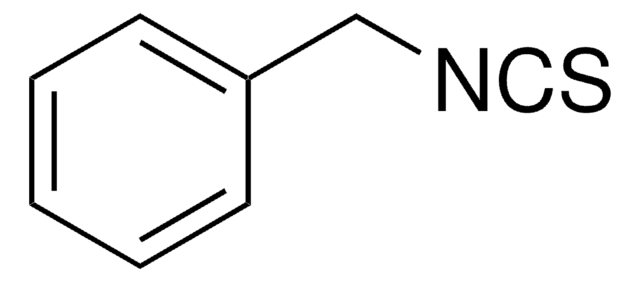SML3434
Erucin
≥98% (HPLC)
Synonym(s):
(4-Isothiocyanatobutyl)(methyl)sulfane; 4-(Methylthio)butyl isothiocyanate, 1-Isothiocyanato-4-(methylthio)butane, ERU, MTBITC
About This Item
Recommended Products
Quality Level
assay
≥98% (HPLC)
form
oil
color
colorless to yellow
storage temp.
-10 to -25°C
SMILES string
CSCCCCN=C=S
InChI
1S/C6H11NS2/c1-9-5-3-2-4-7-6-8/h2-5H2,1H3
InChI key
IHQDGXUYTSZGOG-UHFFFAOYSA-N
Biochem/physiol Actions
signalword
Danger
hcodes
Hazard Classifications
Eye Dam. 1 - Skin Corr. 1B
Storage Class
8A - Combustible corrosive hazardous materials
wgk_germany
WGK 3
flash_point_f
Not applicable
flash_point_c
Not applicable
Choose from one of the most recent versions:
Certificates of Analysis (COA)
It looks like we've run into a problem, but you can still download Certificates of Analysis from our Documents section.
If you need assistance, please contact Customer Support.
Already Own This Product?
Find documentation for the products that you have recently purchased in the Document Library.
Our team of scientists has experience in all areas of research including Life Science, Material Science, Chemical Synthesis, Chromatography, Analytical and many others.
Contact Technical Service








